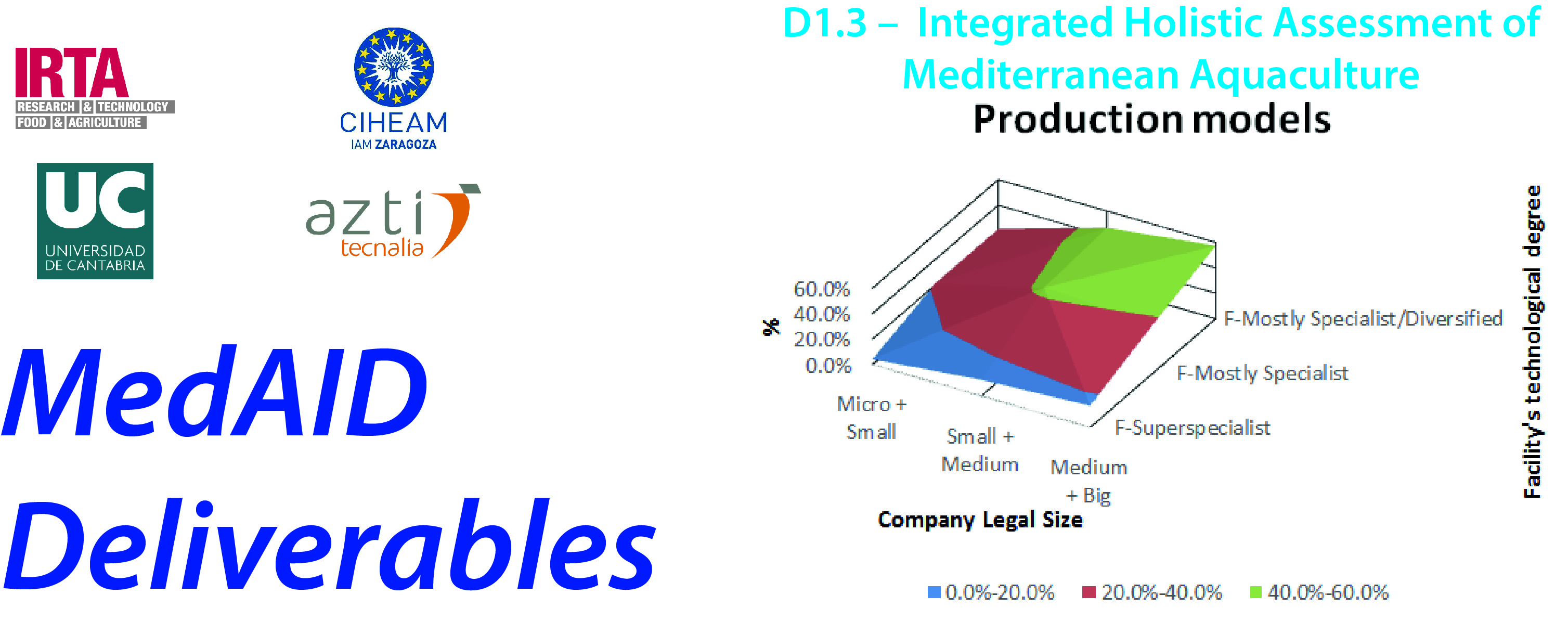Aquaculture, besides being an economic activity that generates employment in coastal and rural areas, is a source of food, essential to ensure food security. This is clearly specified in the FAO report The State of Fisheries and Aquaculture 2018 (FAO, 2018), which states that “With capture fishery production relatively static since the late 1980s, aquaculture has been responsible for the continuing impressive growth in the supply of fish for human consumption”.
In the Mediterranean, the demand for fishery products has been rising steadily during the last decades, due to an important population growth and an increase in human per capita consumption (CIHEAM, 2010). These developments have caused a growing pressure on Mediterranean fish stocks, most of which (about 78%) are currently being fished at biologically unsustainable levels, according to FAO-GFCM (FAO, 2018b). Thus, as in other areas, Mediterranean countries are facing an important and growing seafood supply deficit that can only be compensated by aquaculture.
The development of the Mediterranean aquaculture sector, as it could have been expected, at least in the European countries. The stagnant production of marine fish aquaculture in the European Mediterranean contrasts with the development observed in neighbouring countries (i.e. Egypt, Tunisia and Turkey). There are many factors that may have caused this situation, resulting in a limited competitiveness that seems to be linked to multiple components throughout the production cycle and the value chain. Doubts remain as to whether low zootechnical productivity is caused by a lack of genetically improved fish, poor feed performance, inadequate health management, or a combination of these and other environmental factors. The lack of market strategies and an insufficient knowledge of consumer preferences have also been questioned. On the other hand, companies develop their business in a complex economic environment. All these factors, together with the increased competition for coastal uses, a low public perception of aquaculture and a complex administrative framework, constitute a major challenge for aquaculture development.
In this context, the MedAID project (Mediterranean Aquaculture Integrated Development) aims to increase the competitiveness and sustainability of the Mediterranean marine fish aquaculture sector along its value chain, by improving its technical productivity and economic performance with a market- and consumer-oriented approach, as well as higher social acceptability and better governance.
In the MedAID project, we believe that the problem is transnational and trans-species, as it was pointed out in the EAS2014 session and stressed in Rotterdam 2015: “Production has to be optimized in all aspects, i.e. feeding, efficiency, handling large numbers of individual fish, integrating technology development and careful slaughter.” The reasons above were considered by MedAID when defining a first Work-package (WP1) to develop a “Holistic sustainability assessment of Mediterranean aquaculture: zootechnical, environmental, economic, social and governance”. The results of each thematic analysis were presented in the “Deliverable D1.2: Assessment of Mediterranean Aquaculture Sustainability.” Thereafter, some additional results and a more integrated analysis were made and are presented here in the Deliverable D1.3: “Integrated holistic assessment of Mediterranean aquaculture.”
The Mediterranean fish marine aquaculture sector analysis shows that sales volumes amounted to 373,000 metric tons and 1,300 million juveniles, valued at 1,500-1,700 million euros in 2016 (MedAID’s data compilation from different sources). Based on Davidsson models (Akureyri & FAO, 2009), which estimates that the value of primary production must be between 15% and 20% of the total value of the industry through the Value Chain (processing, distribution, and retailers steps), we can infer that the value of the whole Mediterranean seabass and seabream chain would be estimated at more than 7.000 million euros.
More…http://www.medaid-h2020.eu/index.php/2019/10/08/deliverable-d1-3/

